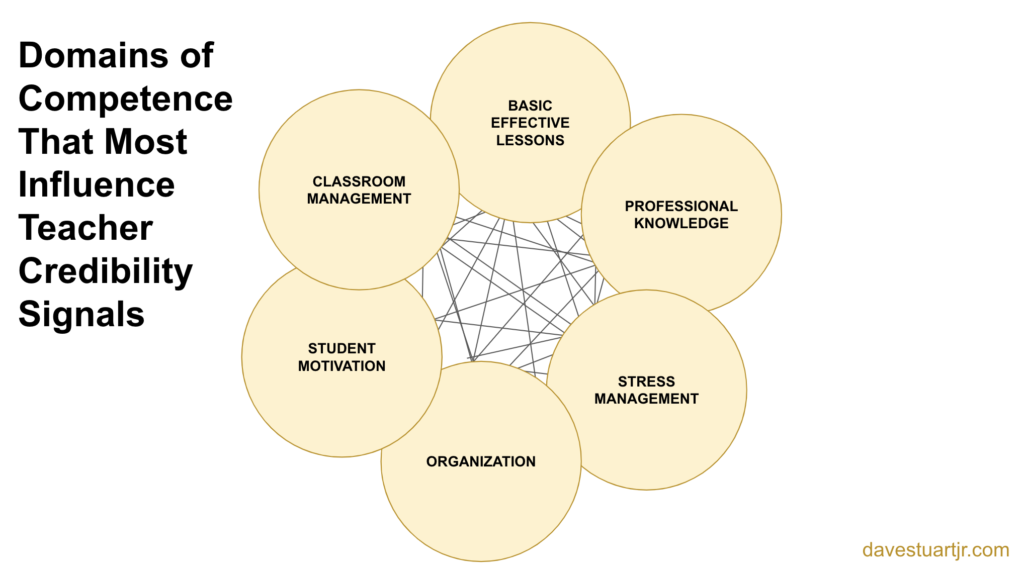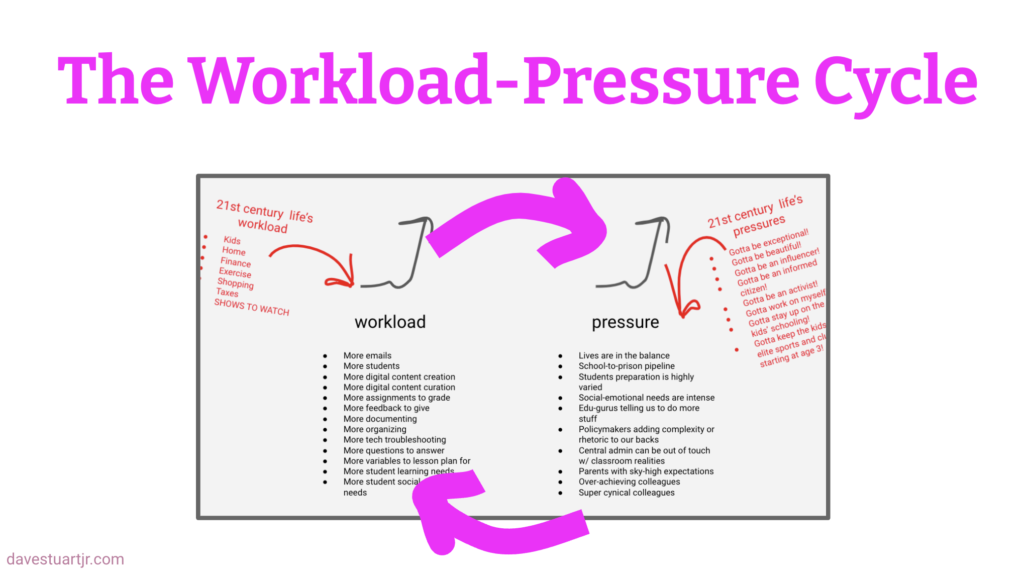This is meant to be a one-stop-shop solution to all of your back-to-school-specific needs with the inner work of teaching. The essential question that this article's sections seek to answer for you and me is this: What methods are best suited to getting our heads and hearts right for a new school year?
Start Your Back-to-School Prep with Two Critical Questions
All teachers and faculty deserve time and space to delve deeply each August into two critical questions.
- What, in a single sentence, is your Everest this school year? If you had to boil down into a single sentence what you're hoping your class/classes/subjects produce in your students, what would that sentence be?
- (This exercise appears in the first chapter of These 6 Things. You can access the whole first chapter for free right here.)
- What one area of professional growth would you like to focus on this school year? This makes way for what I've previously called lumpy growth, and it's the most motivating method I'm aware of for growing in your expertise as a teacher.
(I made a short video for a school in Macon, GA, that was exploring these questions; you can see it here so long as you forgive the fact that my Airbnb closet is wide open during it.)
Let's explore each a bit more deeply.
The Everest Question: What, in a single sentence, is your Everest this school year?
Here are some answers to the question I've heard from colleagues. Keep in mind that all of these are drafts.
- Music: Through teaching music and band, I can help my students become good citizens. “Good” meaning kind, responsible, problem solvers, and hard workers. — John Hawk, novice teacher in Arkansas
- Art: I hope my students experience the joy & benefits of experimenting while creating art and observe that there are multiple perspectives and ways to achieve an outcome. — Jen Swift, expert art teacher in Cedar Springs, MI
- Art: I hope my students are able to observe and draw what they actually see and not what they think things should look like. (I hope that they can transfer this concept to their lives and live more authentically and wholeheartedly.) — Jen Swift, expert art teacher in Cedar Springs, MI
- Agricultural Science: Develop leadership, life skills and career success through hands-on experiences, labs and trips that students would otherwise not experience at home. — Brent Willett, Ag Sci teacher in Cedar Springs, MI
- Spanish: I hope that students are able to see that learning a language is a pathway to better understand others and themselves — to learn to communicate with others who may be different from them and who may see the world through a different lens allows them to understand the world at a deeper level. So, in sum… my class is for making an insane amount of errors while trying to make meaning in order to love and understand more people. — Amy Holmes, AP Spanish teacher in Cedar Springs, MI
- Science: To proficiently learn, explain, and apply science disciplinary core ideas while learning, practicing, and demonstrating science and engineering practices. — Steve Vree, science teacher
I could list a hundred more.
I seriously love Everest sentences.
Please send me your examples, to (dave_at_davestuartjr.com) — along with what you teach and what name I can use when giving you credit. 🙂
The “Improve at One Thing” Question: What one area of professional growth would you like to focus on this school year?
Here's a graphic I sometimes use to help folks make decisions with this question. It's my contention that, while there are tons of things we can pick to improve upon as teachers, these are some of the areas that most impact our Credibility with students.

To me, *what* you pick matters far less than *that* you pick.
I hope that makes sense.
This morning, I went and spoke with teachers in Linden, CA, and their energy was just… wow. So much enthusiasm for this work, freshness for this vision of promoting the long-term flourishing of young people by teaching them toward mastery all across the school day. It was really phenomenal.
And it got me thinking on the first theme of this month's “Teaching Simplified” series. In the series, each day's post is meant to point your heart and mind toward the kinds of things that will set you up for a strong and impactful year.
But I also want to develop some clear through lines as we go — some categories that will be clear for us when we zoom all the way out upon our entrance in to another year of our good and hard work.
And here, colleague, is through line number one: the inner work of the teacher. It's a thing. It's a skill. It's a muscle. Grow it, and delight. Neglect it, and pine.
Yesterday, we looked at the inner work of:
- focusing our intentions (Everest); and
- focusing our improvement (lumpily).
Today, let's look at setting a strong foundation for managing our time this year.
This is going to help us get wiser, faster.
And it's going to keep us sane.
Visualize Your Simple Rules
I'm going to let a video do the talking on this bit of advice.
What follows is one of the lessons inside my Time Management Course; to make it publicly available, I posted the lesson video on YouTube (my channel for educators is here).
In case you're in a rush or are reading this in print, here's the gist of what I'm after:
- Set simple rules that place boundaries around your working hours this coming school year. Here are mine.
- Monday through Friday: I can work from whenever I wake up until I need to be home from work, which is 5:00 or 5:30 pm depending on the night's agenda. And do no work at home!
- Saturdays: On rare occasions, I can talk with Crystal to arrange a Saturday morning work session, where I get to work from whenever I wake up until 11:00 am. Typically, this happens for something writing- or professional development-related, but during heavy essay times (spring) I'll sometimes use a Saturday morning for essay feedback.
- As I discuss in the video — these work for me and my family. They're not better or worse than yours. Whatever your constraints are, my encouragement to you is to accept and embrace them.
- Visualize those rules so that you can see the boundaries for work that you need to keep this year. Here is my visualization.

And, if I might add two additional pointers, they'd be this:
- Communicate these rules with someone who will hold you accountable.
- Be prepared for these rules to cause you problems, and please — let these problems help you!
This'll make all the difference for your time management this year.
Think on Helpful Things
Here's a dynamic of the soul that must be contended with: too much pressure makes us worse at our jobs, which in turns adds to our pressure.
I call this the Workload-Pressure Cycle. It's a recursive doom loop. Left undisrupted, it disrupts our souls.
It looks like this:

Thankfully, there are two ways in which the Workload-Pressure Cycle can be disrupted:
- First, habituate depressurization practices.
- Second, simplify your workload.
Let's talk about one depressurization practice that's so simple that it's almost always overlooked: think on helpful things.
Let's illustrate this with three examples:
An unhelpful thing:
My job is to be all the things that I sense everyone expects educators to be.
A helpful alternative:
My job is to promote the long-term flourishing of young people by guiding them toward mastery of whatever discipline or art that I'm tasked with teaching them.
An unhelpful thing:
I must be the best teacher who provides the best educational experience for my students.
(Note that “best” means scarcity; there can only be one. Best is comparative.)
A helpful alternative:
I must be a good teacher who provides an enjoyable and productive educational experience for my students.
(Note that “good” means abundance; all of us can be good. Good is plentiful.)
An unhelpful thing:
I can't fail in my job. It's too important.
(With this mentality, you'll hide from or cover up your failures. They'll squash you.)
A helpful alternative:
Failure is a part of becoming good at my job. What matters is that I learn and grow and reflect.
(With this mentality, you'll expect and share your failures. They'll strengthen you.)
The best path to swapping an unhelpful thought for a helpful one is to write the helpful one on an index card and tape it to your computer monitor.
When you see it, read it aloud to yourself.
Say it to yourself in the mirror each morning.
Within a month, you'll be different and better — and you'll have left ideas like “best” behind.
Have more ideas?
Share them in the comments below!
Leave a Reply